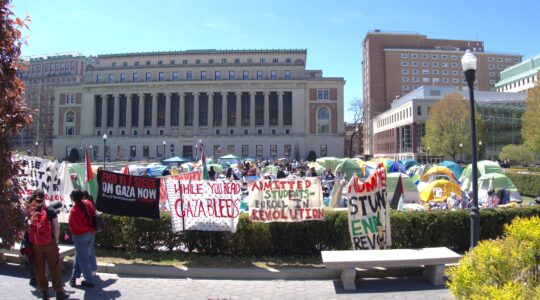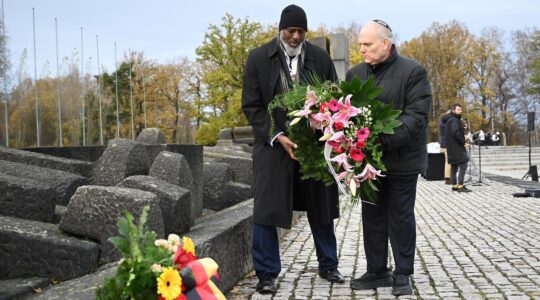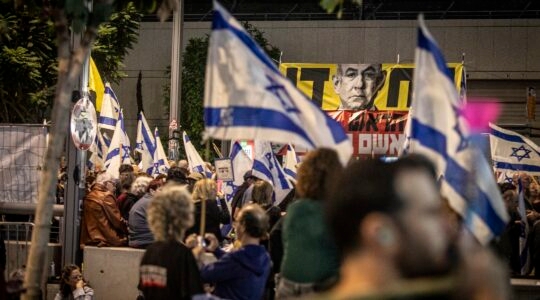ALBUQUERQUE, N.M. (JTA) — Late on the afternoon of Saturday, March 25, 1911, a fire erupted at the Triangle Shirtwaist Company on the top floors of a modern, fire-proof building at the corner of Manhattan’s Washington Place and Greene Street, near Washington Square Park.
In the bedlam precipitated by the flames and smoke, more than 200 panicked employees jammed the only open exit; a company policy aimed at eliminating employee theft locked a second exit door. They overwhelmed the one inadequate working elevator, and the single fire escape collapsed. Those trapped inside rushed to the window ledges and, with flames licking at their backs, leapt. They fell to their deaths on the pavement below within sight of thousands of witnesses.
When firefighters finally controlled the blaze, officials tallied the number of victims at 146. No one could be certain of the identity of the dead because many of the bodies were charred beyond recognition. Only last month did an amateur historian finally identify and name the last six unidentified victims. Among the dead, the vast majority, 127, were women, mostly Jewish immigrants from Russia. Many also were immigrants from southern Italy.
The ironies associated with the tragedy were almost too unbearable to ponder.
The Jewish immigrant women and girls came mostly from families who practiced Orthodox Judaism and for whom Saturday was the Sabbath, when they should not have been at work.
Had the company been unionized, as were many of its competitor shirtwaist manufacturers by March 1911, employees may have been long gone before the fire erupted. Yet from the moment that the shirtwaist makers had quit work collectively in the winter of 1909-10 to demand union recognition, the Jewish owners of the Triangle Shirtwaist Company refused to recognize their employees’ union, Local 25 of the International Ladies’ Garment Workers’ Union.
The blaze erupted not in a stereotypical, unsanitary, cramped sweatshop but in a modern steel-frame building that was well lit and well ventilated.
Perhaps the ultimate irony is the manner in which the tragedy has been commonly remembered and even today is being memorialized on its 100th anniversary.
Far too many of the remembrances link the Triangle Fire to an era of social reform associated with the names Al Smith, Robert F. Wagner Sr., Frances Perkins and ultimately to Franklin D. Roosevelt and the New Deal. It is a tale in which social reformers like Perkins improve workplaces, limit the hours of labor by law, provide legal protections for women and child workers, institute worker pensions, and transform toilers such as the Triangle workers from wage slaves into middle-class consumers.
Undoubtedly, that tale bears a large measure of truth.
Unfortunately, however, it obscures a far more important reality — one that was dearer to the fire’s victims, their families and their fellows at work in the city’s garment industry — that was expressed vividly by Rose Schneiderman, herself once a shirtwaist maker and now an organizer for the ILGWU.
At a memorial meeting convened by such respectable reformers as Perkins, Schneiderman lamented that “Too much blood has been spilled. I know from my experience that it is up to the working people to save themselves. The only way that they can save themselves is by a strong working-class movement.”
Few truer words were ever spoken. Laws to improve working conditions were meaningless unless enforced. Public agencies rarely had enough inspectors to ensure the implementation of statutes violated with impunity by unscrupulous employers.
It took unions to make regulations effective in the daily lives of workers.
The unions that emerged in the garment trades, the core of the Jewish American labor movement, not only insured that new laws were enforced; they provided additional layers of safety and security. The ILGWU bargained with employers to create a Joint Board of Sanitary Control to police conditions in the shops. The ILGWU and its counterpart in the men’s garment industry, the Amalgamated Clothing Workers of America, pioneered in providing their members with pre-paid, first-class health care and modern commodious apartments.
In doing so, the unions saved thousands of lives that otherwise would been sacrificed to fetid living conditions, communicable diseases, most notably tuberculosis, and inadequate health care.
Today, fewer than 7 percent of private sector workers belong to unions. A well-financed and coordinated attack seeks to limit the rights of public employees. Wage theft is rife, and employers prey upon undocumented immigrant workers and insecure documented immigrants.
It is past time to recall the lesson Schneiderman taught — that workers must save themselves, and that the best way to do so is through organization.
(Melvyn Dubofsky is distinguished professor of history and sociology emeritus at the State University of New York at Binghamton and author of numerous books on U.S. social and labor history.)

Help ensure Jewish news remains accessible to all. Your donation to the Jewish Telegraphic Agency powers the trusted journalism that has connected Jewish communities worldwide for more than 100 years. With your help, JTA can continue to deliver vital news and insights. Donate today.





